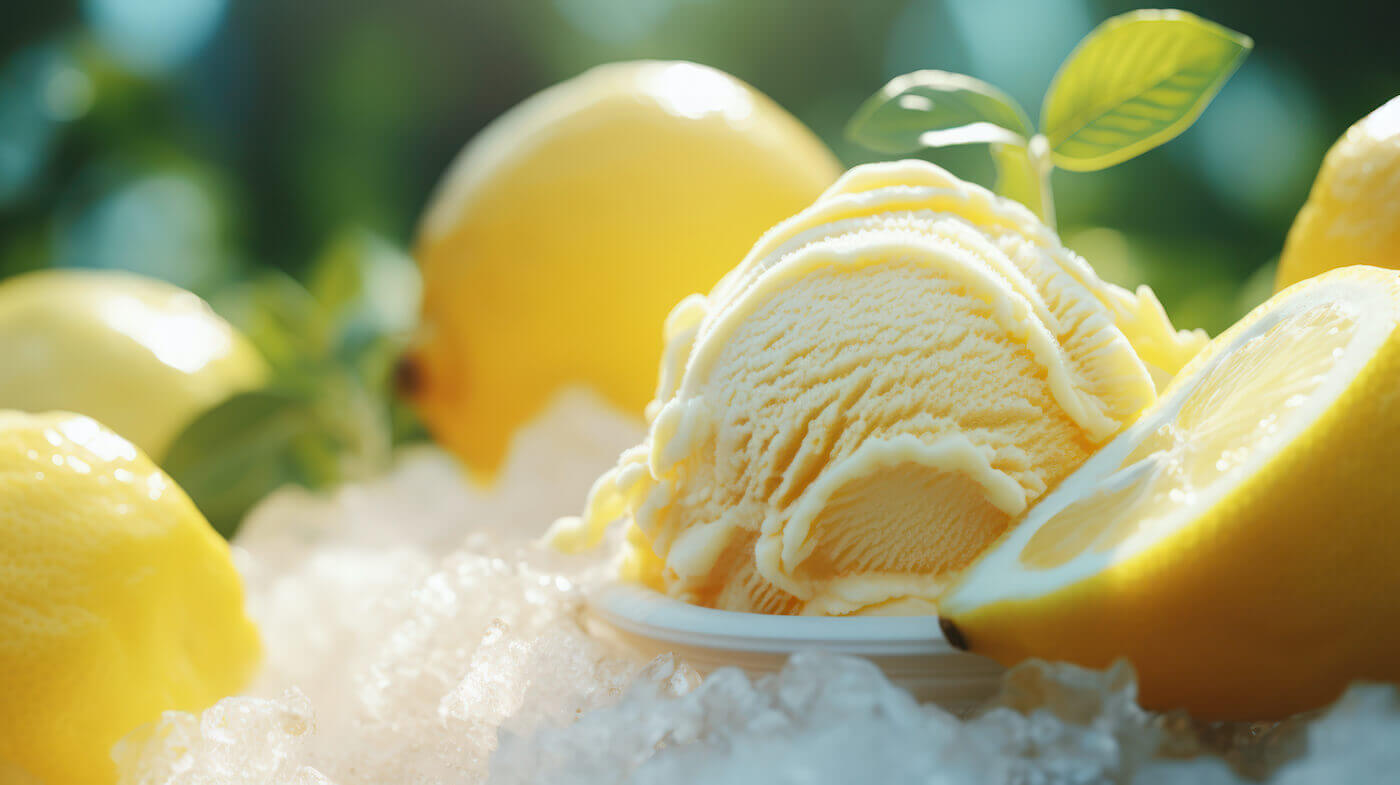What Are Palate Cleansers?

A walk to clear our minds, a workout to relieve tension, or a visit to the chiropractor to realign the spine — we give our bodies and minds a reset in various ways to help us transition from one physical location or mental space to another.
In the culinary world, palate cleansers serve a similar purpose for our mouths. They can give our taste buds a reset and help us transition from one flavor to the next.
Although a palate cleanser might sound like a practice reserved for haute cuisine or wine tastings, in reality it can elevate any type of multi-course meal and can be easy to do at home as well.
Palate cleansers can range from simple citrus slices to artfully crafted herbal infusions. Let’s discover how you can make them part of your culinary toolkit.
How Palate Cleansers Help Enhance Flavor Profiles
In simple anatomical terms, the palate is the roof of the mouth and separates the mouth from the nasal cavity. However, the word “palate” can also refer to a person’s appreciation of taste and flavor.
So, cleansing the palate refers to a literal “rinsing” or reset of the flavors in our mouths, erasing those you just consumed to prepare for the next ones and allowing you to savor each to its fullest potential. A palate cleanser might also stimulate the appetite or help digestion.
There’s a science to how they work. Ingredients like sorbet, citrus fruits, or herbs neutralize lingering flavors by removing fatty residues and stimulating saliva production. This process helps restore taste bud sensitivity and balance the palate.
Additionally, the temperature and acidity of palate cleansers can increase their effectiveness by refreshing and invigorating the palate. Think ice cold milk after an encounter with screaming-hot buffalo wings, for example.
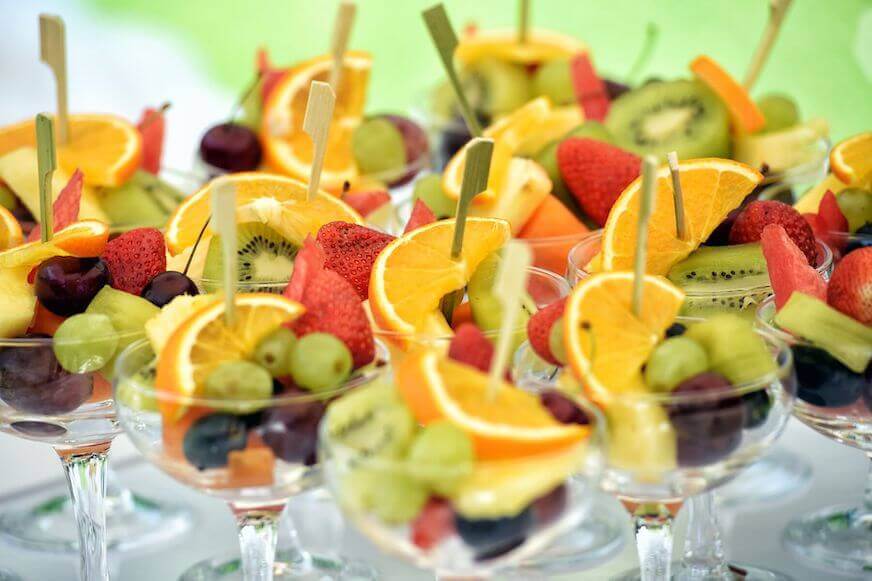
Fruit cocktail is a popular palate cleanser.
4 Popular Types of Palate Cleansers
Different palate cleansers work in different ways and serve different purposes. Here are four classic examples and the roles they play in enhancing your meals.
1. Sorbet: A Sweet and Refreshing Treat
Sorbet is a frozen dessert made from fruit puree or juice, sugar, and water.
Fruit sorbets are a popular choice of palate cleanser because the sharp citrus is particularly refreshing and effective at ridding the mouth of strong flavors. The cold temperature of sorbet also has a temporary numbing effect on the taste buds, which can help reset them between courses. In France and Italy, the sorbet course is referred to as intermezzo.
2. Water and Plain Crackers: A Simple Approach
For a neutral cleanser, water and bland crackers like saltines make for a straightforward yet effective option.
Water helps rinse away lingering flavors and cleanse the mouth between courses. Some people prefer plain water while others believe carbonated water better scrubs the taste buds.
Bland crackers work by providing a neutral base that absorbs any residual flavors from the previous course. They allow the palate to reset without the need to re-introduce new flavors.
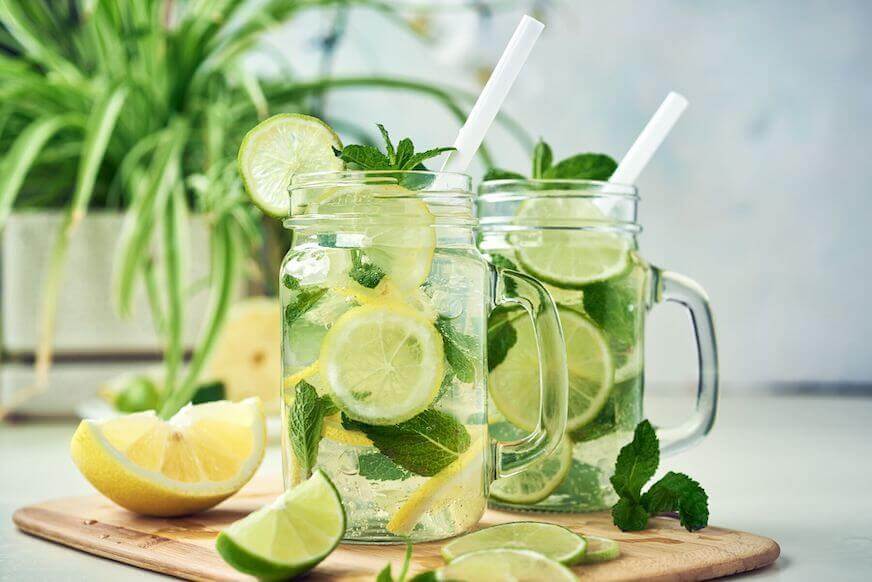
Water infused with fruit or cucumbers and herbs can make for an effective palate cleanser.
3. Herbs and Greens: Nature’s Palate Cleansers
If water and crackers are neutral, herbs and greens offer a bit of zip and zest that can invigorate the taste buds in anticipation of the next round.
Mint leaves, parsley, and cilantro are common herbs used for this purpose due to their refreshing and herbaceous qualities. Leafy greens like arugula or watercress have a peppery and slightly bitter taste, which can help refresh the palate and prepare it for the next course.
Herbs and leafy greens are often incorporated into salads or garnishes, adding a fresh and crisp element to the meal.
4. Milk and Yogurt: An Effective Way to Turn Down the Heat
Milk and yogurt are often used as palate cleansers after consuming spicy or strongly flavored foods. They each contain fats, which can help dissolve and wash away the compounds responsible for the heat and spiciness in your mouth. The fat also acts as a barrier between the spicy molecules and your taste buds, reducing the sensation of heat.
Milk and yogurt also contain proteins like casein, which can bind to and neutralize the capsaicin compounds responsible for spiciness in chili peppers. This can help alleviate the heat on your palate.
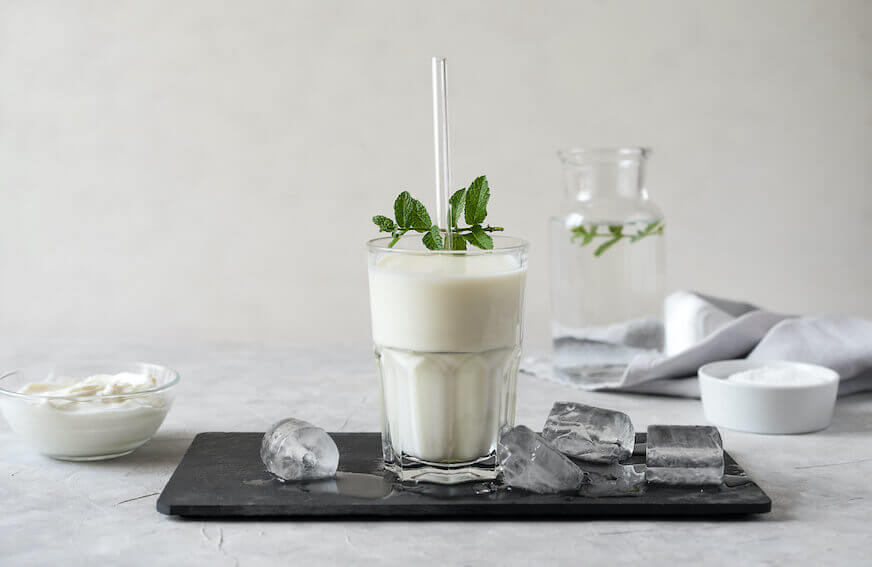
Milk and yogurt rely on their natural fats to neutralize flavors and spiciness.
When to Use Palate Cleansers
It’s important to consider the menu, the flavors of each course, and the overall dining experience you want to create as you decide whether to add in palate cleansers and which ones to use.
Here are some guidelines to determine when a palate cleanser might be useful:
Cut the Weight After Fatty or Oily Dishes
Fatty or creamy dishes can coat the palate, making it harder to appreciate subsequent flavors. A palate cleanser can cut through the richness and prepare your taste buds for the next course.
Lemon sorbet is one option with its bright acidity that can help cleanse your palate and balance the richness of fatty or oily dishes.
Help Distinguish Between Wine or Beverage Flavors
If you’re enjoying a wine tasting or a series of different beverages with your meal, using a palate cleanser between sips can help you fully appreciate the characteristics of each drink. The cleanser helps prevent the flavors of one wine or beverage from interfering with the next.
Mild, unsalted cheese like mozzarella or a baguette with a bit of cheese can work well to neutralize your taste buds when wine tasting.
Chase the Fishiness After Seafood Courses
Seafood dishes often have distinct and delicate flavors. A palate cleanser like a small salad with fresh herbs or a citrus-based sorbet can remove any residual fishy notes, allowing you to enjoy the next seafood course more fully.
Something with a little fragrance and snap, like ginger, can also work well. Pink ginger is popular with sushi, for example, doing double duty as a flavor enhancer and as a palate cleanser.
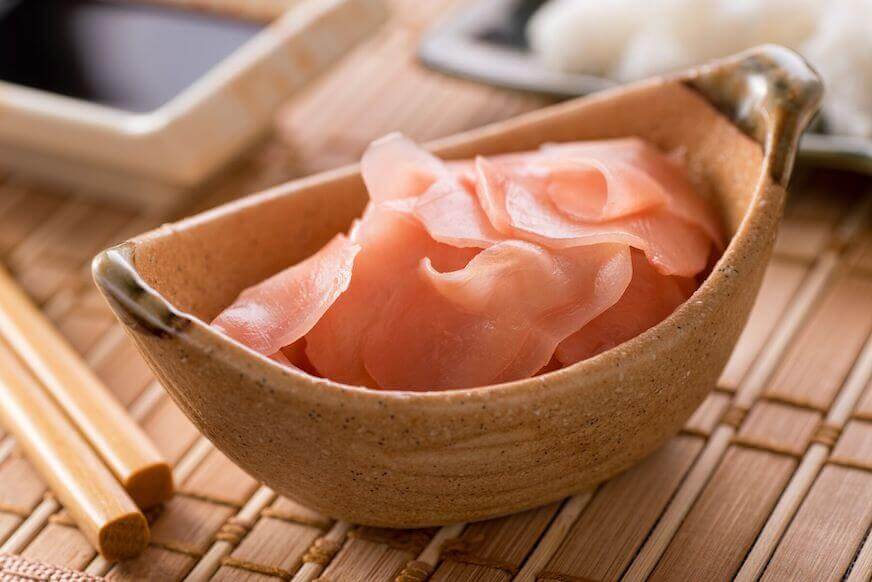
Ginger is a popular palate cleanser in many sushi dishes.
Tone Things Down After Strong or Spicy Foods
Palate cleansers are particularly useful after dishes that are spicy, seasoned liberally, or that have strong, bold flavors. A cleanser can help neutralize and refresh the palate after such intensity.
Cold milk can neutralize the heat from spicy foods due to its fat content while soothing the burning sensation caused by spicy or hot foods.
Use as a Go-Between Before Dessert
Transitioning from savory to sweet can be challenging without a palate cleanser. A small serving of sorbet, a fruit salad, or even a palate-cleansing cocktail can prepare your taste buds for the sweetness of dessert, enhancing your overall dining experience.
Palate Cleansers Allow Your Cooking to Take Center Stage
Palate cleansers are more than just a fancy addition to a dining experience; they serve a crucial role in enhancing the flavors of your meal and ensuring that its intricate flavors can be fully enjoyed.
Whether you’re hosting a multi-course feast or simply looking to appreciate the nuances of your favorite foods, consider trying a palate cleanser to get the most out of your cooking and dining experiences.
If you’re eager to find out more about traditional and creative uses for everyday ingredients, consider exploring our online cooking classes. These classes, offered as a partnership between Escoffier Home Gourmet and America’s Test Kitchen, can give you access to great recipes and to an Escoffier Chef Instructor.
Culinary & Pastry Career Survey
Culinary & Pastry Career Survey
What's your ideal culinary career? Answer 20 simple questions and see if your dream career gets revealed to you.

We’ve compiled of all of the essential questions into one handy guide: Career options, description of skill requirements, and more!


Interested in discovering more home gourmet cooking tips and advice? Check out these articles next!
- Top Apps for Finding Recipes for Ingredients You Already Have
- Cooking Oil Smoke Points and Why They Matter
- Beer 101: A Basic Guide For Understanding Beer Styles
This article was originally published on April 12, 2015 and has since been updated.

